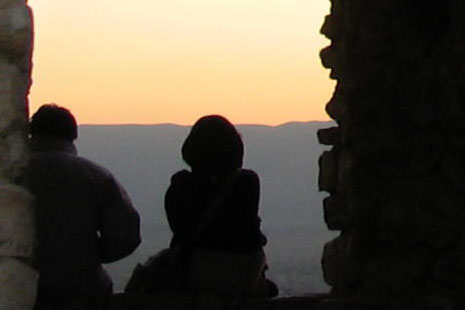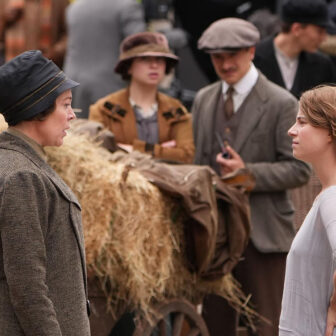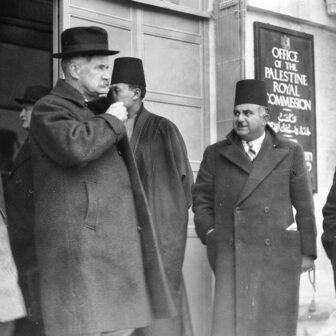IN MAY the ABC made Ronin Films, the independent Canberra-based distributor, a firm offer to buy and screen a one-hour documentary called Hope in a Slingshot. This film, which was independently financed, explores daily life in a part of the Palestinian territories under the Israeli occupation. Interviews and observation are punctuated with maps, segments of history back to 1948, and statistics – for example, on the forced evictions of Palestinian families, on deaths by violence on both sides, on periods of imprisonment, on the numbers of young Palestinian men confined to their villages. One map shows how far the settlements have penetrated the West Bank, and thus the near-impossibility of the so-called two-state solution. The huge concrete security fence – or segregation wall, depending on which side you’re on – is inescapable; diagrams show how far it moves east of the notional border, separating workers from workplaces and families from each other. The checkpoints appear in clusters, sometimes no more than seven kilometres apart. The Israeli soldiers are cavalier and inconsistent; here they scrutinise papers minutely, there they don’t bother.
The filmmaker, Inka Stafrace, interviews both Israeli and Palestinian residents of the West Bank; she tried and failed to get into Gaza as well. She follows a peaceful demonstration, involving international visitors, Jews and Palestinians together; they are assaulted by armed Israeli soldiers who use rubber bullets, but those do considerable bodily damage. She finds a senior Israeli lawyer, a woman who defends Palestinians in court and who finds her own country’s practices abhorrent. She finds young people gripped by anger and frustration; one is cast down to the point of hopelessness by the sight of another line of trailers, marking a new building site, on a Palestinian hillside; others plead for attention from the international community. Stafrace reflects on the psychological damage to young men from long-term restriction and surveillance, a system that breeds exactly the sort of enmity it seeks to guard against. Around the checkpoints, as she watches people subjected to pointless, malicious obstruction, she has to keep her temper; she sees that for the sake of the victims around her, she can’t afford to lose it. Holding her camera close, she shares her own fear as she walks alone toward a checkpoint. Through the whole essay, feeling and factual analysis work dynamically together; having seen this, we won’t forget.
For Ronin, a small family firm with a long track record in supporting film work outside the mainstream, the ABC sale was very important, both for its own sustaining income as well as for the circulation of this particular documentary. It fell through; the head of television, Kim Dalton, cancelled the deal on the grounds that since (as he saw it) the film is an expression of opinion on “contentious” matters, it couldn’t be run unless a program made from the Israeli side was run as well; he referred to a general policy of “impartiality.” Dalton said that the ABC had been unable to find such a program. A friend remarked that at that rate you couldn’t run an anti-slavery film without turning on a pro-slavery one as well; and what price Four Corners?
The call for “balance,” however, misses the point that this film is arguing for peace rather than, more simply, pressing the Palestinian cause. While there has been an international shift toward better recognition of the Palestinians’ case – a shift that was under way even before the assault on Gaza and the attack on the aid ship – there are also Jewish people everywhere who want to see peace with justice. In Hope in a Slingshot the concluding interview is with two young women, who wish passionately that nationalities and national identities could simply disappear, taking the bitter inheritance with them. The film is a rational assemblage of evidence on that inheritance, its reasons and its force in the present; it isn’t an anti-Israel polemic. Behind the Palestinians’ story of occupation and oppression, there is always Israel’s own story, the grand postwar multicultural project, a social-democratic dream buried under fear-driven militarism. Because these stories are, perennially, the whole world’s business, this film is one we should all be able to see. It seeks to contribute to the process of changing perceptions: a twenty-first-century shift. The ABC’s action amounts to self-censorship; the thinking here is seriously out of date.
Hope in a Slingshot will undoubtedly find outlets, both in and outside Australia. You can get it on DVD from Ronin Films. •





